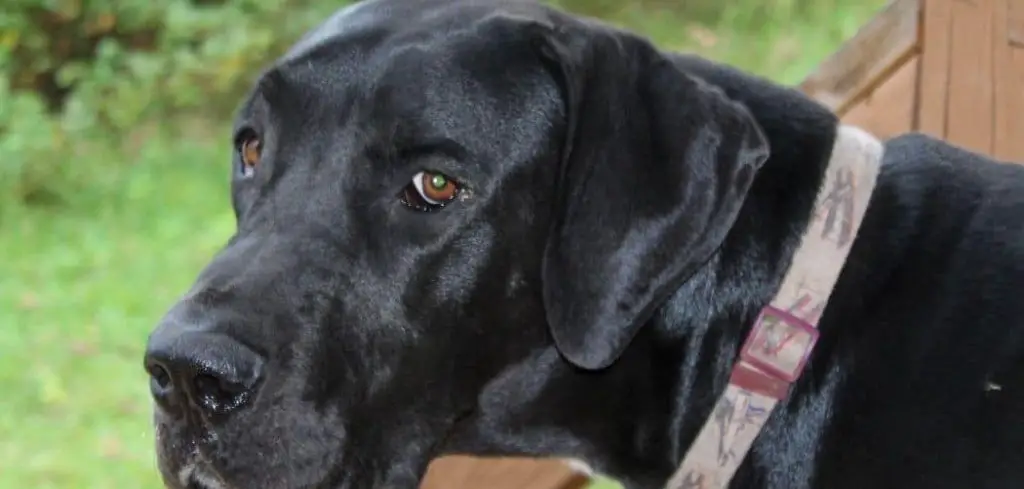Hearing your dog moan while also refusing food can be distressing and confusing for any pet parent. This combination of symptoms often signals pain, illness, or emotional distress that shouldn’t be ignored.
We outline the common causes of dog moaning and not eating, what you can do at home, and when to seek veterinary help.
My Dog Is Moaning and Not Eating — Why It Happens
When your dog is moaning and not eating, it’s usually due to physical discomfort, pain, gastrointestinal distress, or emotional upset. Conditions such as arthritis, internal injuries, pancreatitis, or anxiety can trigger moaning, especially when combined with appetite loss.
Illnesses that affect the digestive tract, musculoskeletal system, or even neurological function may cause these concerning behaviors. Emotional responses to fear, stress, or environmental changes can also contribute.

Dog Moaning and Not Eating: Common Causes
Pain or Injury
Moaning is a classic sign of physical pain in dogs. If your dog is also refusing to eat, they may be experiencing moderate to severe discomfort.
Injuries like sprains, strains, or internal trauma (such as after a fall or accident) can cause dogs to vocalize when moving, lying down, or being touched.
Appetite often decreases when a dog is hurting, especially if it’s painful to move toward their food bowl or chew.
Gastrointestinal Upset
Nausea, gas, bloating, or abdominal cramps can cause dogs to moan or groan, especially when lying down.
They may also show signs like licking their lips, pacing, or assuming a “prayer position” (front down, rear up).
Loss of appetite is one of the first signs of GI discomfort and could be due to dietary indiscretion, infection, or a more serious internal issue.
Read more: Dog Shaking and Not Eating (Is it pain, stress, or something worse?)
Pancreatitis
Pancreatitis (inflammation of the pancreas) is a painful and dangerous condition that frequently causes dogs to stop eating.
Moaning may occur because of the severe abdominal discomfort associated with this illness.
Additional signs can include vomiting, lethargy, a hunched back, and dehydration. This condition is more common in dogs who have consumed fatty foods.
Arthritis or Joint Pain
Older dogs or breeds prone to joint issues may groan when lying down or standing up, especially on cold mornings.
If your dog is moaning and also not eating, it may be due to arthritis pain affecting their daily comfort.
They may avoid walking, show stiffness, or act withdrawn — all signs that should be evaluated by your vet.
Emotional Distress or Anxiety
Dogs may vocalize in response to stress, loneliness, or confusion, especially after major changes like moving homes or the loss of a family member.
Appetite can also decrease significantly with emotional upset.
Look for pacing, hiding, trembling, or attention-seeking behavior alongside the moaning.
What to Do If Your Dog Is Moaning and Not Eating
Start by gently checking your dog for obvious signs of injury, swelling, or stiffness. Avoid moving them too much if they seem uncomfortable.
If your dog will tolerate it, offer a small amount of bland food like boiled chicken and rice to see if they’re willing to eat.
Keep your home calm and quiet — stress can worsen moaning and decrease appetite.
Make sure your dog has a warm, comfortable place to rest and isn’t being disturbed by noise or other pets.
If the symptoms last more than a few hours or worsen quickly, it’s safest to contact your vet.
When to Call or Visit Your Vet
If your dog’s moaning is persistent, increasing, or combined with other symptoms like vomiting, diarrhea, or shaking, don’t wait.
Sudden refusal to eat, especially in combination with vocal signs of discomfort, may indicate something serious.
You should also seek help if your dog:
Can’t stand, walk, or seems disoriented
Is drooling excessively or retching
Has a bloated or tight abdomen
Has not eaten in more than 24 hours
Shows signs of pain when touched
The longer these symptoms go on, the more dangerous they can become — early intervention is best.
Read more: Dog Growling Not Eating (Why it happens and how to help)
Key Takeaway
If your dog is moaning and not eating, it’s often a red flag that something’s not right — physically or emotionally.
From painful conditions like pancreatitis or arthritis to emotional distress or injury, this behavior combination should always be taken seriously.
While some causes may be mild and temporary, others require urgent veterinary care. Trust your instincts — your dog is communicating discomfort, and prompt action can make all the difference.
